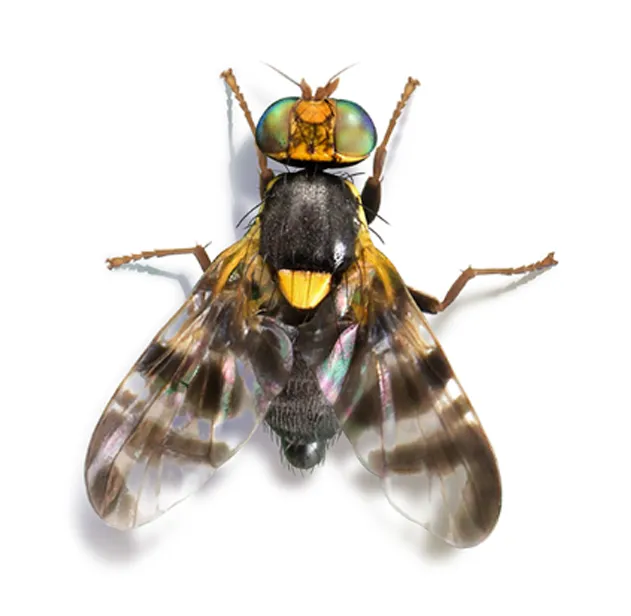Cherry fly is known as the most important pest of cherries. The adults usually emerge at the end of May or the beginning of June. These adults start laying eggs within a week. This species is generally active in warm and humid weather.
Cherry fly causes damage mainly on its host plants, cherries and sour cherries. These products have zero tolerance in exports. Therefore, it is essential to use effective methods in combating this species. Significant results can be achieved with cultural, biological, biotechnical, and chemical methods. Failure to control this pest can lead to substantial economic losses.
Cherry Fly Trap
The cherry fly, scientifically known as Rhagoletis cerasi, is a harmful species that damages cherry trees. It is commonly found in Europe, Asia, and North America. The cherry fly negatively impacts cherry production, leading to economic losses.
This harmful species exerts its impact through its larvae. The larvae feed within the fruit, causing it to rot and fall off. Rotten fruits have zero tolerance in exports. The activity of this species can result in significant economic losses, making control of the pest of great importance.
The damage caused by this fly species includes:
Fruit Damage
The eggs are laid inside the fruit, and the larvae feed on the fruit flesh. This leads to the rotting of the fruit, causing them to lose their commercial value.
Economic Damage
The infestation by this species reduces fruit quality and negatively impacts market value.
Export and Agriculture
Cherry cultivation is hampered. The decline in product quality reduces export potential and can even lead to trade restrictions.
For these reasons, controlling this pest species is of great importance.
Several methods are used to combat the cherry fly. These methods include:
In this method, the collection and destruction of infected fruits help reduce the fly population. Additionally, avoiding the planting of wild cherry and Lonicera species in areas with cherry trees is effective in controlling the population.
This method involves the use of insecticides. Spraying is done during the fly’s flight period.
This method uses natural enemies such as predatory insects or parasitic wasps.
In this type of control, methods such as yellow sticky traps, pheromone traps, light traps, food-attractant traps, and colored water traps are used. Among these, pheromone traps and yellow sticky traps are the most preferred.

How to Make a Cherry Fly Trap?
The most commonly preferred trap types, yellow sticky traps and pheromone traps, are cost-effective. They are favored by producers due to their ease of use and cost-effectiveness.
Here are the points to consider regarding the characteristics, advantages, and installation of these traps:
Pheromone Traps
This type of trap contains chemicals that mimic the pheromones released by female insects. Male insects, following these pheromones, are attracted to the trap and destroyed. Additionally, water-filled containers placed inside the trap cause the attracted pests to drown.
The installation of pheromone traps is quite simple. The prepared pheromone capsules are placed inside the trap. The traps are hung in wooded areas at a height of 1.5 to 2 meters at specific intervals. In order to get the full efficiency of the trap, it is recommended to hang it in areas that are not exposed to wind.
The advantages of pheromone traps include:
- They are important for population monitoring and control.
- They reduce chemical use, adding no additional cost to the producer.
- They target only a single pest species, thus sparing beneficial organisms.
- By limiting chemical use, they protect the environment and human health.
- They target the male fly population, reducing reproduction.

Yellow Sticky Traps
These traps are designed to exploit the attraction of insects to the color yellow. The surface of the traps is coated with a sticky substance, which traps and kills the pests.
The traps are hung between cherry trees. The advantages of this method include the reduction of chemical use, providing early warning, and being environmentally friendly. Additionally, due to their simplicity in installation, cost-effectiveness, and species-specific targeting, they are among the most preferred methods.
The cherry fly trap and the traps used in combating this species are crucial methods for population monitoring and control.
For more information on the methods used to combat this pest species and species-specific details, you can contact Kapar Organic.
Frequently asked questions about cherry fly:
The application timing varies by region, but it is typically applied in April and May.
This species overwinters as a pupa in the soil.
The adults of this fly species begin flying from early May to July, and the females start laying eggs a week later.
